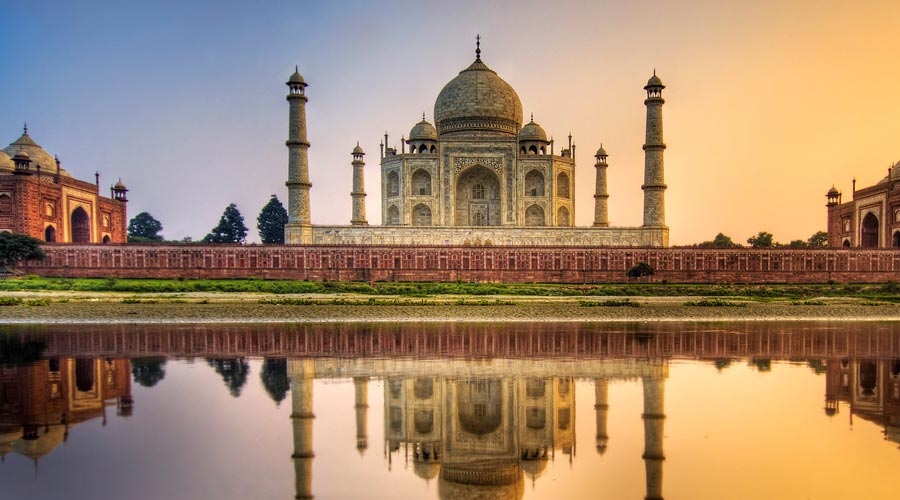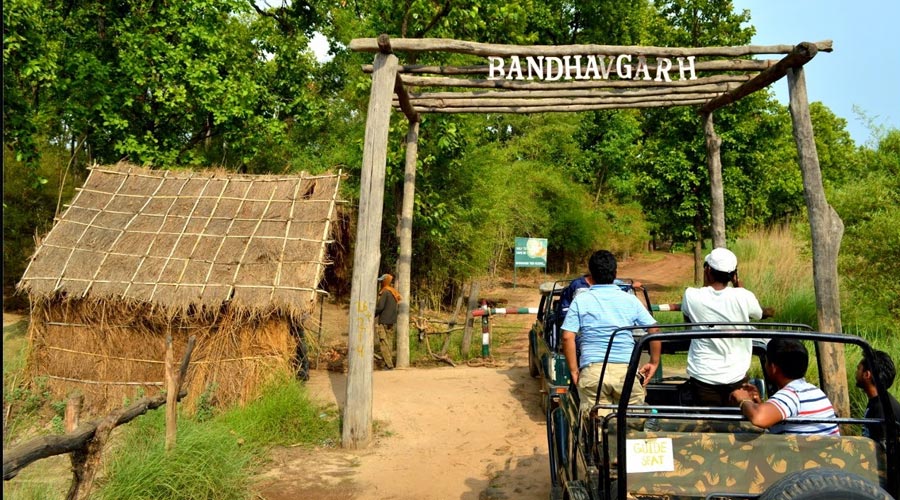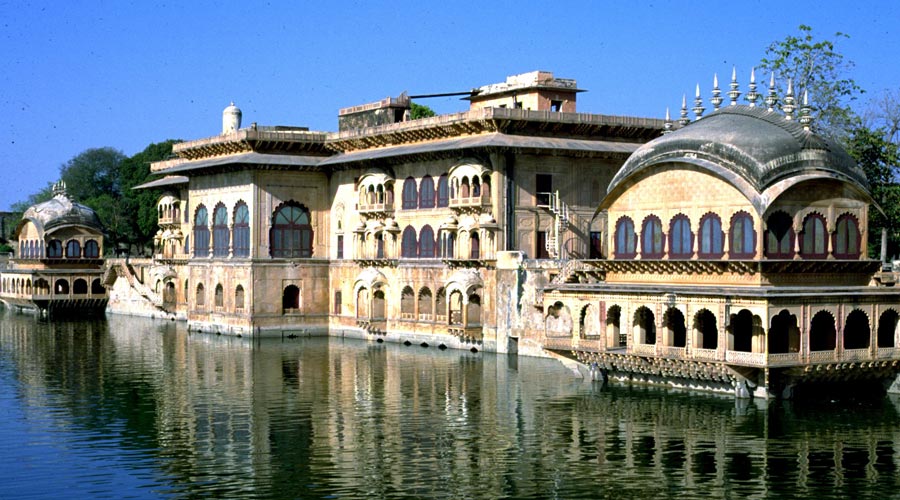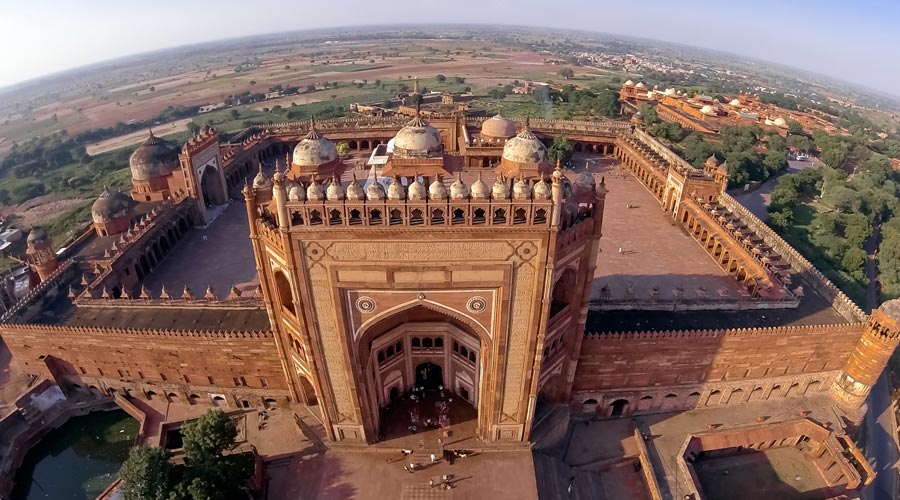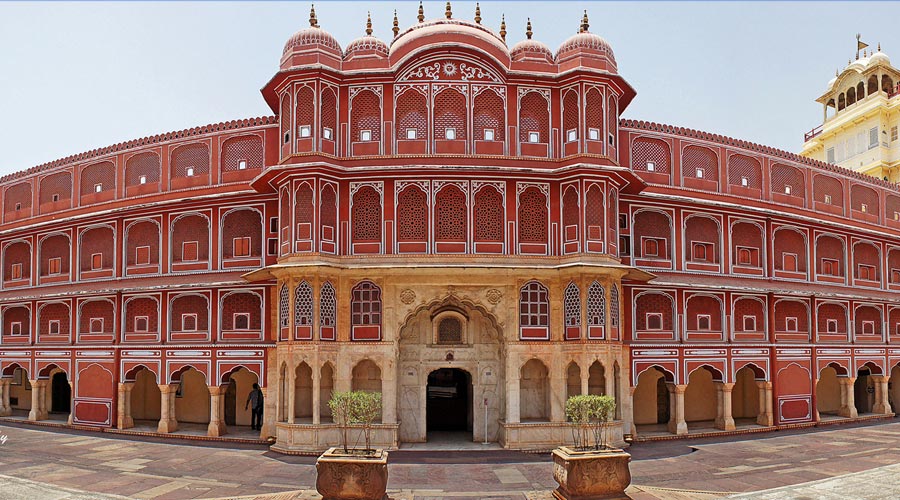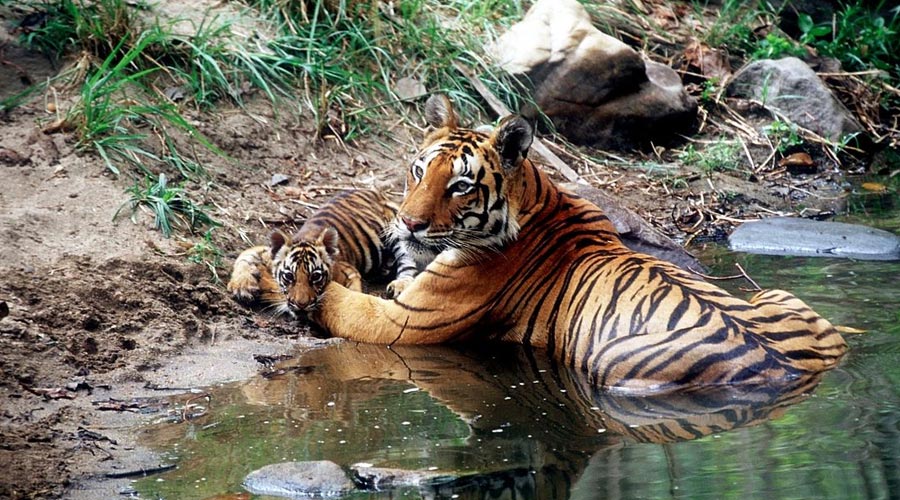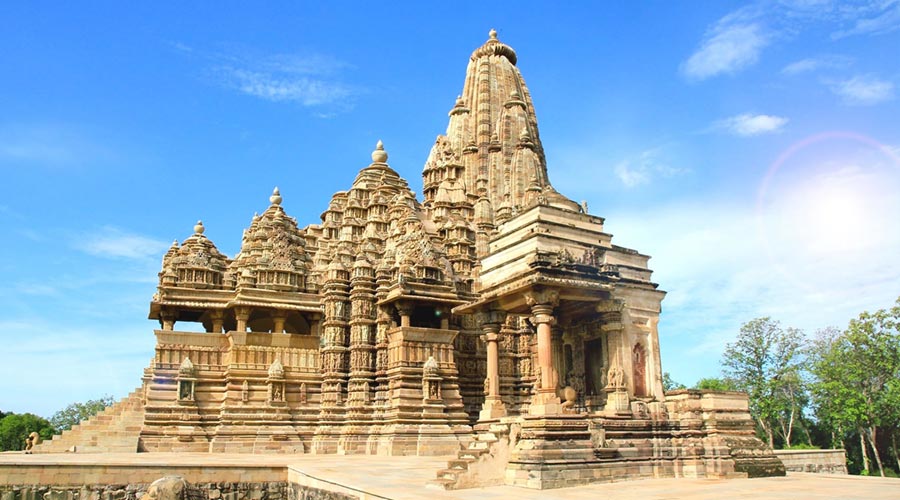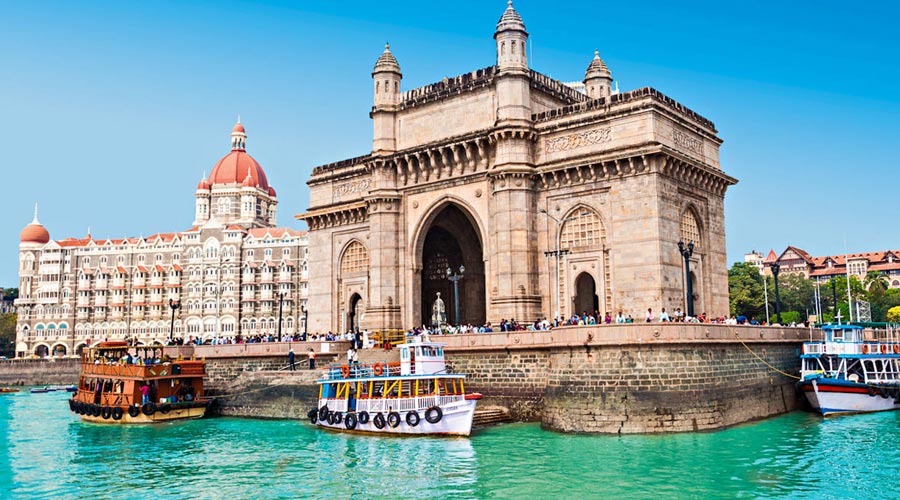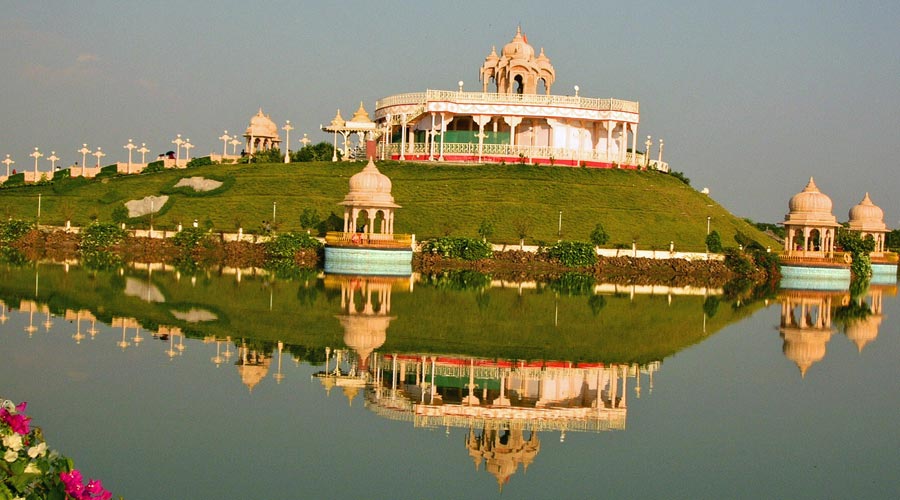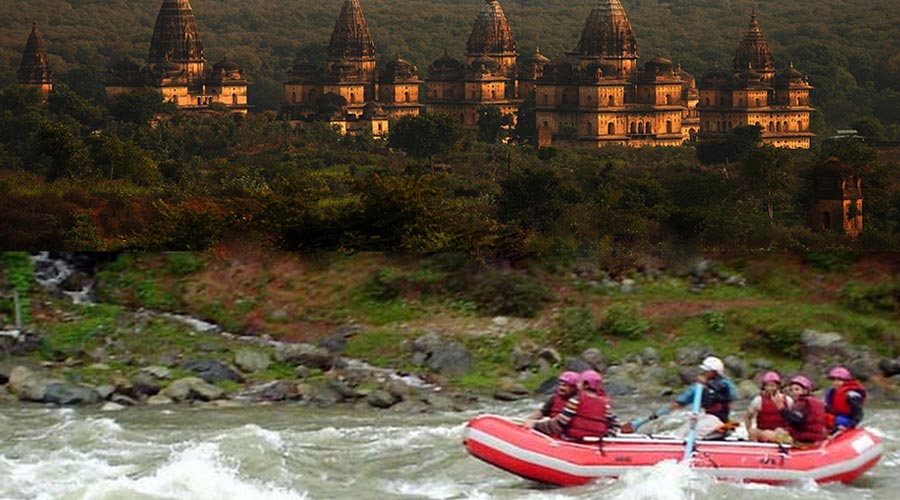Destination: Mumbai-Nagpur-Kanha-Bhandavgarh-Khajuraho-Orcha-Agra-FatehpurSikri-Bharatpur-Jaipur-Delhi.
ITINERARY
Day 1: Arrive Mumbai
Mumbai, known as Bombay is a major metropolitan city of India. It is the state capital of Maharashtra.Mumbai is the most multicultural, vibrant cosmopolitan city. The city has a multitude of unique and interesting sights and the monument overlooking the Arabian sea. The Gateway of India is a popular place to start exploring Mumbai. On arrival our representative would meet & assist at the airport. Transfer to the hotel. Relax and prepare for the exciting activities ahead.Overnight at Hotel.
Day 2: Mumbai- Nagpur-Kanha
Morning transfer to airport to board the Flight from Mumbai to Nagpur. Nagpur is the second capital and the third largest city of the Indian state of Maharashtra . Founded by the Gond King of Deogad, the city once served as the capital of the Bhosle rulers in the central India. The royal era has resulted in enrichment of the city, as far as its monumental heritage is concerned. Nagpur is also called the Tiger Capital of India, as it connects many tiger reserves in India . It is also the important cities for the Information Technology sector in Maharashtra.
Drive to Kanha National Park for a 3-night stay. Kanha National Park is one of Asia’s premier wildlife reserves. In 1973, it was included among the first Tiger Reserves under Project Tiger.
It is the perfect destination for those who wish to relax in idyllic surrounds and explore the remote forests and villages of central India.Overnight at Camp.
Day 3 to 4: Kanha
Apart from daily safaris into Kanha National Park, one can relax at the Camp in a hammock, have a massage, bird watch, take a nature walk, or photograph the wildlife coming to drink at the waterhole. Watch the elephants bathing in the river, and explore local villages with their traditional architecture and colourful markets. At night there are film shows and tribal dances, and if lucky the one might catch a glimpse of a Mottled Woodowlor a Giant Flying Squirrel in the forest around the Camp.
Day 5: Bandhavgarh
Drive from Kanha to Bandhavgarh.Arrive and check in at Hotel.
Bandhavgarh is a world famous national park for tiger photography and sighting. Here one can see tigers in their natural habitat, along with many other mammals, birds and reptiles. India’s first white tiger was also found in this forest. It was a private hunting preserve of Bagheladunasty till 1968.This park has a large biodiversity. The density of the tiger population at Bandhavgarh is one of the highest known in India. The park has a large breedingpopulation of leopards, and various species of deer. Afternoon jeep safari accompanied by a forestdepartment guide. Overnight at Hotel.
Day 6: Bandhavgarh
Early morning elephant safari into the jungle for tiger tracking.It normally happens when the Tiger has been tracked by the forest department inside bush. Experience theafternoon jeep safari. Overnight at Hotel.
Day 7: Bhandavgarh-Khajuraho
Early morning enjoyjeep safari. Later drive to Khajuraho. Situated in the northern part of Madhya Pradesh, Khajuraho is famous for its enchanting temples . The Khajuraho Temples are dedicated to a celebration of womanhood, her myriad moods and facets. These temples have been designed and carved leading the eyes from ground level upward till one seem to be looking at heaven. Reach Khajuraho and check in at the hotel. Day at Leisure. Overnight at Hotel.
Day 8:Khajuraho
Morning visit the temples which are world famous.These temples are the most exquisite specimen of Hindu architecture and sculpture in medieval India. Though sculptures are the main attraction to common visitor. The architectural style of the Khajuraho temples is very different from the temple prototype of that period. Visit all of the temples of Khajuraho divided into three geographical groups Western, Eastern and Southern. Overnight at Hotel.
Day 9: Khajuraho-Agra
Morning after breakfast. Drive to Orchha. It is a medieval city founded by the Bundela rulers with palaces and temples of the 16th & 17th century. The town is known for its Chattris which were built in the memory of the kings. The place is flanked by the river Betwa. lunch at Orchha. Proceed for sightseeing of the sites within the Fort Complex.
Reach Jhansi and take a deluxe train to reach Agra by evening. Agra is caught up in a world of contrasting edifices, of red sandstone and white marble, narrow galleys and quaint buggies, and the irresistible charm of the Mughals. It is not surprising, that modern Agra still reflects its Mughal heritage most conspicuously. A walk down the narrow bustling streets of the city will introduce the visitor to the wafting aroma of Mughals cuisine. Overnight at Hotel.
Day 10: Agra
Proceed for a sunrise view of the TajMahal.The epitome of love and romance, TajMahal was built by the Mughal Emperor Shah Jahan as a dedication to his beautiful wife MumtazMahal.
TajMahalis an architectural wonder, apart from its stunning design balance and perfect symmetry, the Taj is also noted particularly for its elegant domes, intricately carved screens and some of the best inlay work ever seen. Return back to the hotel for breakfast.
Afternoon visit of Agra Fort. Built by the Mughal emperor Akbar in 1565 AD, the fort is predominantly of red sandstone. It lies on the bend of the river Yamuna, almost in the heart of the town. Itmud-Ud-Duala also known as BABY TAJ, is entirely made out of Marble. This is actually a mausoleum that overlooks the River Yamuna and is a tomb of Mir Ghiyas Beg, a minister in the court of Shah Jahan.Overnight at Hotel.
Day 11: Bharatpur
Drive from Agra to Bharatpur National Park, one of the most famous bird sanctuaries in the world. En route visit FatehpurSikri. Akbar, who was without a male heir heard about Saint SalimChisti and visited him in the year 1568. The saint blessed him with 3 sons and in gratitude Akbar ordered the great mosque of FatehpurSikribuilt under his supervision. As a mark of respect to the saint, Akbar shifted his capital to FatehpurSikri and built various secular buildings.
Bharatpuralso known as Keolodeo Ghana National Park is an important international bio-sphere known for its large and varied avifauna, both local and migratory.There are proper pathways inside the sanctuary and one can comfortably enjoy bird watching. Ifdesire,can rent a bicycle for few hours and explore the bird sanctuary on own. Afternoon visit the Government Museum and Lohagarh Fort. Overnight at Hotel.
Day 12: Jaipur
Drive to Jaipur, the famed ‘Pink City’ also the present capital of Rajasthan known for its palaces, three hill forts and a shopper’s paradise. Jaipur is the capital of Rajasthan a romantic realm of resplendent palaces, mighty fortresses and regal Maharajahs that lies in the western deserts and is an utterly unique part of India.
Evening, visit Birla Temple to know the fascinating religious life of Jaipur.Carvings in the temple and on pillars supporting the covered walkways include images of the Hindu pantheon, as well as Jesus, the Blessed Virgin Mary and St Francis of Assisi. Your visit will coincide with the Aarti Ceremony, which involves oil lamps being lit and waved, in order to awake and invoke the deity. Overnight at Hotel.
Day 13: Jaipur
Morning after breakfast, Proceed to Amber Fort. Its construction was started by Man Singh I in 1592, and completed by his descendent Jai Singh I. Elephant rides or a hired jeep can take one up to the towering heights of Amber fort.
City Palace is a delightful blend of Mughal and traditional Rajasthan architecture. It houses the Chandra Mahal, ShriGovindDev Temple and the City Palace Museum.
JantarMantar is the largest and the best preserved of the five observatories built by Jai Singh II in different parts of the country. This observatory consist of outsized astronomical instruments which is still in use.
HawaMahal is a five-storey structure of sandstone plastered pink encrusted with fine work and elaborate balconies.Built in 1799 by Pratap Singh, the Mahal was a royal grandstand for the palace women.
Evening visit ChokiDhani.Experience a true flavour of Rajasthani culture.Enjoy a cultural evening with a folk dance performance by local tribal artistes. A sumptuous Indian dinner will mark the perfect end to a great day Overnight at Hotel.
Day 14: Delhi
Early morning drive to Delhi. Afternoon proceed for a sightseeing tour of the city. The tour will begin with a drive to New Delhi, which reflects the legacy the British left behind. New Delhi also marks the division in the life-styles and the division in the walled city.
VisitQutubMinar, the tallest stone tower in India and Humayum Tomb, built in 1570, is of particular cultural significance as it was the first garden- tomb on the Indian subcontinent.
Later drive past the imposing India Gate, the Parliament building and the RastrapathiBhawan, the President’s residence. Visit the Lotus temple located in south of Delhi. It is lotus shaped and has rightly been given the name. It is made of marble, cement, dolomite and sand.
Afternoon visit to Raj Ghat, a memorial to Mahatma Gandhi; drive past the Red Fort. The magnificent Red Fort, overlooking the river Jamuna was built during the years 1638- 48 when the Mughul Empire was at its peak. The tour continues to Jama Masjid, one of Asia’s largest mosques and which is viewed from the outside. Enjoy the rickshaw ride at Old Delhi. Overnight at Hotel.
Day 15: Depart Delhi
Transfer to the airport to board the flight for onward journey.

